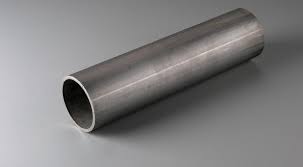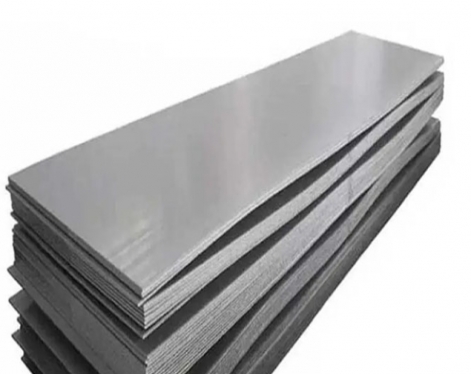Basic principles of stainless steel welded pipe bending
The bending process of stainless steel welded pipe is to bend the straight pipe into the required shape or angle. Before bending, you need to master the basic principles of stainless steel welded pipe bending. The bending of stainless steel welded pipes is affected by the elastic deformation and plastic deformation of the material. Therefore, the bending strength and angle need to be controlled during the bending process to avoid rupture or deformation of the pipe. At the same time, it is also necessary to consider the impact of pipe wall thickness, pipe diameter and other parameters on the bending process to ensure that the bent pipe meets the requirements.

Use appropriate stainless steel welded pipe bending tools
Bending stainless steel welded pipes requires the use of professional bending tools, such as pipe benders, elbows, and pipe bending clamps.
Wait. Choosing the right bending tool can improve the accuracy and efficiency of bending. When using bending tools, you need to pay attention to the usage methods and operating points of the tools to ensure safety and accuracy.
Currently, there are two main methods for bending stainless steel pipes on the market:
1. Cold bending method
The cold bending method mainly relies on a bending machine to perform multiple operations for shaping. This method is easily limited by the diameter of the steel pipe. Generally, it can only bend steel pipes between 1CM and 5CM. Furthermore, the bending arc is relatively small, and the diameter of the steel pipe is easily deformed during the bending process.
2. Hot bending method
The cold bending method is to fill the stainless steel pipe with sand, and then stretch and bend it after high-temperature heat treatment. This method is ideal for bending processing. However, there are also disadvantages. The processing cost is too high, and it is not suitable for large-volume orders.
Reasons for cracking of stainless steel welded pipe bending
Stainless steel pipes crack. There are many reasons for this. Generally speaking, there are four common situations. One is after tensile deformation, the second is immediately when exiting from the die, and the third is stretching. It occurs when it is impacted or vibrated after deformation, and it occurs after a period of time after stretching or deformation or during use.
The reason is simply that the ductility of stainless steel materials is relatively low. The first possibility is that the elastic modulus is high. The second possibility is that the hardening index is large. The third reason is that the plastic deformation stage of stainless steel materials from yielding to cracking is relatively short.
Difficulties with bending stainless steel welded pipes.
1. During processing, the friction between the workpiece and the tool will generate high heat, and the tool will easily wear. Therefore, the requirements for tool materials are even stricter, requiring wear resistance and high temperature resistance. And it must meet the requirements of a sharp blade.
2. The processing speed is slow, the force is large during the cutting process, and the production efficiency is low; in addition, due to the high calorific value, good cooling oil such as sulfur chloride is generally used, which has better effects. The most difficult part is drilling deep holes and tapping. Therefore, workers who process stainless steel welded pipes are required to have rich experience and good skills.
The bending process of stainless steel welded pipe is to bend the straight pipe into the required shape or angle. Before bending, you need to master the basic principles of stainless steel welded pipe bending. The bending of stainless steel welded pipes is affected by the elastic deformation and plastic deformation of the material. Therefore, the bending strength and angle need to be controlled during the bending process to avoid rupture or deformation of the pipe. At the same time, it is also necessary to consider the impact of pipe wall thickness, pipe diameter and other parameters on the bending process to ensure that the bent pipe meets the requirements.

Use appropriate stainless steel welded pipe bending tools
Bending stainless steel welded pipes requires the use of professional bending tools, such as pipe benders, elbows, and pipe bending clamps.
Wait. Choosing the right bending tool can improve the accuracy and efficiency of bending. When using bending tools, you need to pay attention to the usage methods and operating points of the tools to ensure safety and accuracy.
Currently, there are two main methods for bending stainless steel pipes on the market:
1. Cold bending method
The cold bending method mainly relies on a bending machine to perform multiple operations for shaping. This method is easily limited by the diameter of the steel pipe. Generally, it can only bend steel pipes between 1CM and 5CM. Furthermore, the bending arc is relatively small, and the diameter of the steel pipe is easily deformed during the bending process.
2. Hot bending method
The cold bending method is to fill the stainless steel pipe with sand, and then stretch and bend it after high-temperature heat treatment. This method is ideal for bending processing. However, there are also disadvantages. The processing cost is too high, and it is not suitable for large-volume orders.
Reasons for cracking of stainless steel welded pipe bending
Stainless steel pipes crack. There are many reasons for this. Generally speaking, there are four common situations. One is after tensile deformation, the second is immediately when exiting from the die, and the third is stretching. It occurs when it is impacted or vibrated after deformation, and it occurs after a period of time after stretching or deformation or during use.
The reason is simply that the ductility of stainless steel materials is relatively low. The first possibility is that the elastic modulus is high. The second possibility is that the hardening index is large. The third reason is that the plastic deformation stage of stainless steel materials from yielding to cracking is relatively short.
Difficulties with bending stainless steel welded pipes.
1. During processing, the friction between the workpiece and the tool will generate high heat, and the tool will easily wear. Therefore, the requirements for tool materials are even stricter, requiring wear resistance and high temperature resistance. And it must meet the requirements of a sharp blade.
2. The processing speed is slow, the force is large during the cutting process, and the production efficiency is low; in addition, due to the high calorific value, good cooling oil such as sulfur chloride is generally used, which has better effects. The most difficult part is drilling deep holes and tapping. Therefore, workers who process stainless steel welded pipes are required to have rich experience and good skills.
Previous:Schedule 40 VS. Schedule 80 pipe
Next:Schedule 40 pipe









